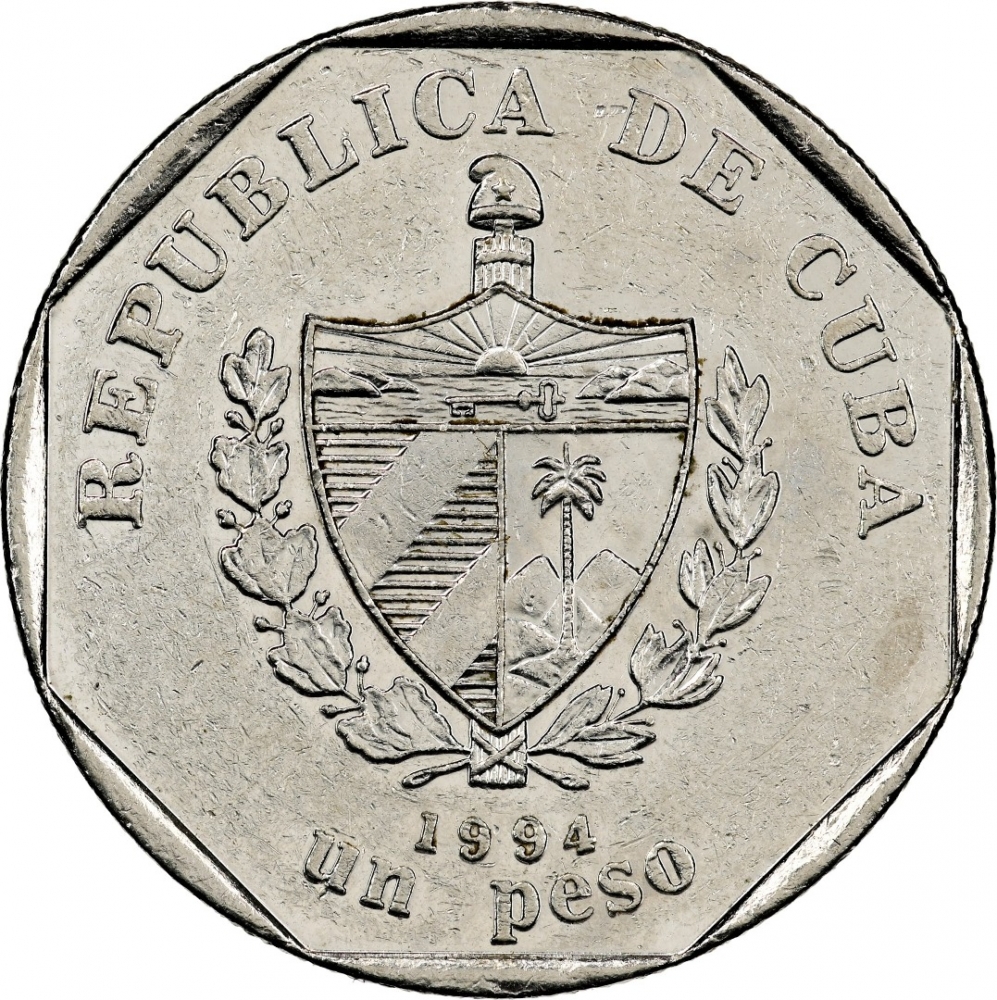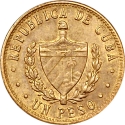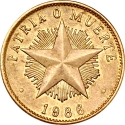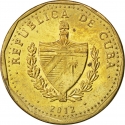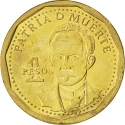You are about to finish your registration. Please check your mailbox (including spam folder). There should be a letter with a confirmation link. Check setting to make sure that your e-mail address is correct.
Send letter again
Obverse

|
Cuban coat of arms, date below, circular legends: name of the country above, and face value in words below; with an 8-sided ring on the edge. REPUBLICA DE CUBA |
|---|---|
Reverse

|
View of Guamá Ville (two houses on poles), face value as numerals $1 (one Peso) on the upper left, name of the place on center. 1$ |
| Edge |
Characteristics
| Material | Nickel Plated Steel |
| Weight | 8.5 g |
| Diameter | 27 mm |
| Thickness | 2 mm |
| Shape |
|
| Alignment | Coin |
| Alt # |
|
